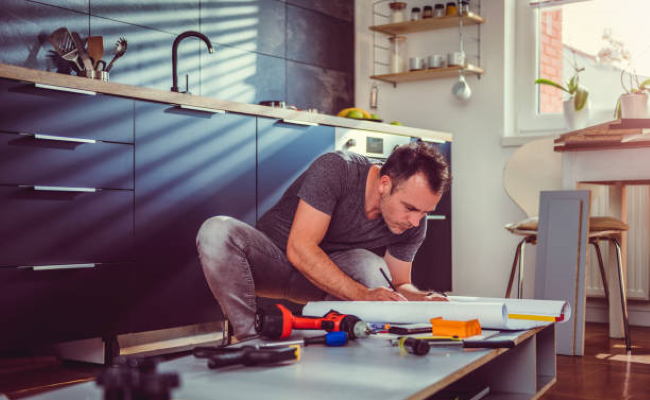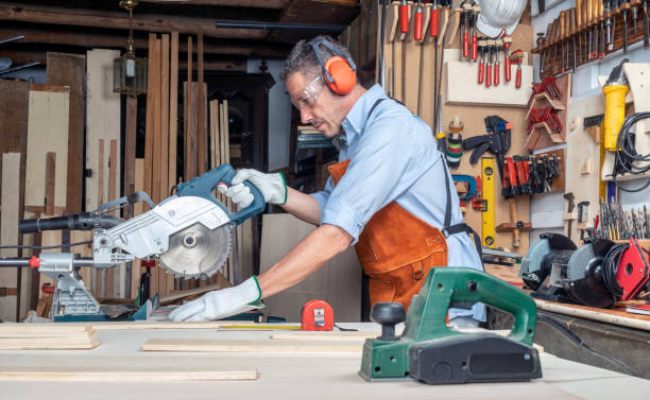Home Decor DIY Safety Tips: Your Essential Guide
Imagine harnessing the power of your imagination to transform your living space into a haven that reflects your style. That is the true potential of do-it-yourself home decor. Home decor DIY projects offer an exciting opportunity to add a touch of uniqueness and creativity to your home.
However, amidst the excitement and creative enthusiasm, it’s crucial to remember an essential aspect: safety. Undertaking DIY home decor projects without considering safety measures can lead to accidents, injuries, and even damage to your property.
In this article, let’s look into the importance of safety when engaging in DIY projects. We will provide valuable tips and expert advice to ensure your creative endeavors are visually stunning and hazard-free.
Recognizing the Risks of Home Decor DIY Projects

Do-it-yourself (DIY) home decor projects are a fun and creative way to make your living space truly yours. However, it is vital to recognize and understand the potential risks involved. Here are some key risks to consider before embarking on a home decor DIY project:
You may also like: DIY Recycled Home Decor: Innovative Ideas for 2023
Safety Hazards
DIY projects often involve the use of tools, equipment, and materials that can pose safety risks. Power tools, sharp objects, and chemicals should be handled cautiously to prevent accidents, cuts, burns, or other injuries.
Lack of Expertise
If you don’t have the expertise to complete a project, you may get subpar results or even damage your home. Assessing your skill level and seeking professional help for projects requiring specialized knowledge or expertise is crucial.
Structural Integrity
Some home DIY projects may involve changes to structural elements such as walls, ceilings, or floors. Altering these components requires proper understanding and consultation with experts to maintain the structural integrity of your house.
Electrical and Plumbing Hazards
DIY projects that involve electrical or plumbing work can be hazardous. Poorly executed electrical work can lead to electrical shocks, short circuits, or fires. Similarly, incorrect plumbing installations can result in leaks, water damage, or pipe bursts.
Time and Effort
DIY projects often require a significant investment of time and effort. Misjudging the time needed or encountering unforeseen challenges can lead to frustration and unfinished projects. It is essential to assess your availability, commitment, and ability to manage the project from start to finish before diving in.
In 2020, InsurancenewsNet revealed that more Americans suffered from DIY injuries. The most common injuries were cuts and falls. The increase in injuries was likely because more people spent time at home doing DIY projects.
The National Fire Protection Association (NFPA) reported that an average of 339,500 home structure fires occurred in the United States in 2019. These accidents resulted in about 2,600 deaths, about 7 people per day on average.
These examples and statistics show the dangers and outcomes of home decor DIY projects when safety measures are neglected. People can safeguard themselves, their homes, and their finances by focusing on safety, like installing smoke alarms or carbon monoxide detectors, while enjoying DIY home improvement projects.
Your Essential Home Decor DIY Safety Checklist
Before engaging in any DIY home project, you should consider safety using appropriate personal protective equipment (PPE). Here are some types of PPE that are perfect for DIYs:
- Dust mask or respirator
- Safety glasses or protective eyewear
- Safety work gloves
- Protective clothing
- Hearing protection
- Knee pads
- Fire extinguisher
Remember, the specific PPE required may vary depending on the nature of your DIY project. It will be a good idea to assess the risks involved and use the appropriate protective gear accordingly. Always follow the maker’s instructions and safety precautions when doing home decor DIY projects. This will help you to stay safe and protect your home.
You may also like: DIY Solar Panels
Safe Use of Tools and Equipment
Using tools safely in DIY projects is of utmost importance for several reasons. Here are some key reasons that highlight the significance of practicing tool safety:
- Personal Safety: The primary reason for using tools safely is to protect yourself from injuries. Many tools have sharp edges, moving parts, or generate significant force, making them potentially hazardous if not used correctly.
- Prevention of Property Damage: Mishandling tools can not only harm you but also result in damage to your property or surroundings. Using tools safely minimizes accidental damage to your home’s walls, floors, furniture, or other items.
- Enhanced Project Outcomes: When tools are used safely, the quality and accuracy of your DIY projects improve. Proper tool usage ensures precise measurements, clean cuts, and correct handling of materials.
Now we know why we need to use tools safely during DIY projects. Here are some tips for the safe use of common DIY tools and equipment:
- Read and follow the instructions
- Wear the right PPE
- Secure your work area
- Avoid using extension cords to plug power tools
- Use tools in well-lit and well-ventilated areas
- Use appropriate tools for the job or task at hand
- Store away your tools safe
- Seek professional assistance when needed
In a Nutshell
Engaging in home decor DIY projects can be an exciting and fulfilling endeavor. However, it is essential to prioritize personal and home safety throughout the process. By following a comprehensive safety checklist, conducting thorough evaluations, and taking necessary precautions, you can create a secure environment for your DIY projects.
Remember to plan and prepare adequately, evaluate the space, prioritize electrical safety, and handle tools and materials carefully. Personal safety comes first, so adhere to fire safety protocols, dispose of waste responsibly, and conduct testing and inspection.


